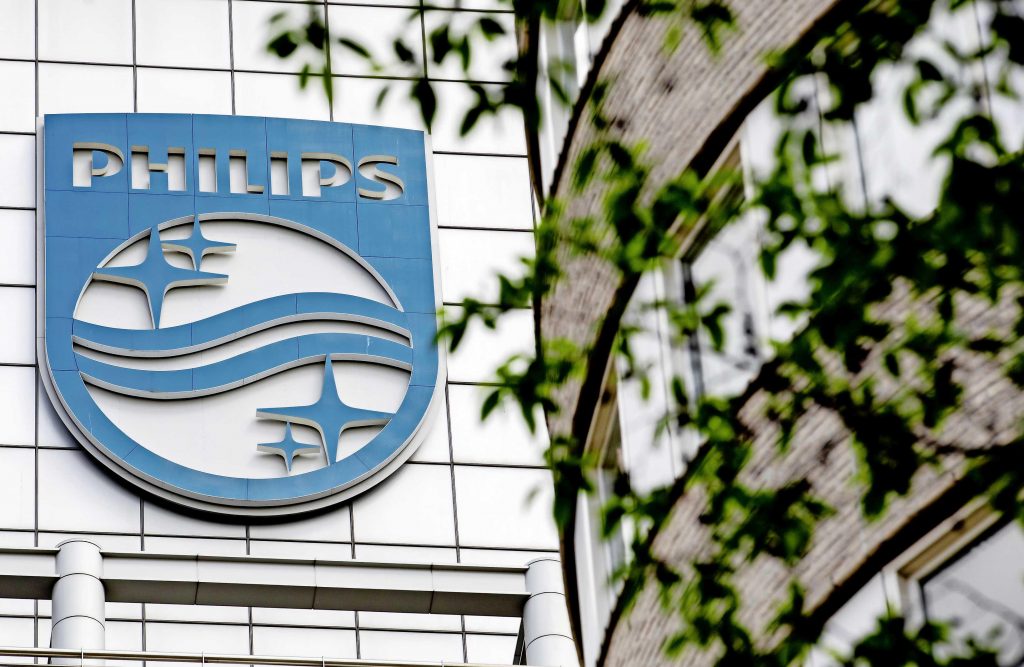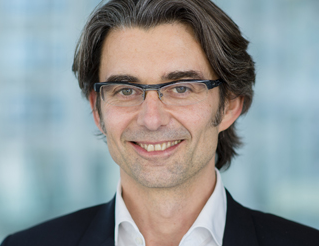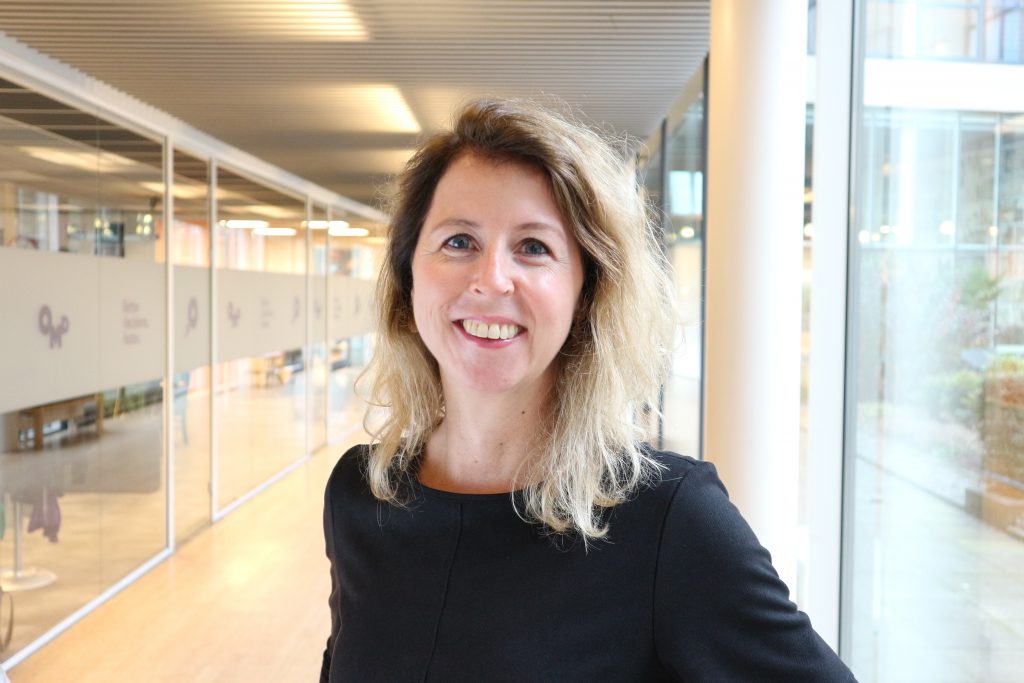COVID-19 Communications: a character test for organisations
May 17, 2020
Omnicom PR Group brings HEMA and Philips to virtual square table to share insights.

Rosalinde van de Wall | Managing Director & Senior Partner
May 17, 2020

“When you realize we will never go back to the old, but are on the way to a new reality, this in of itself allows room for innovation,” noted Frederike van Urk, Corporate Comms Director for HEMA (global) in the opening moments of our first ‘Square Table’ just last week.
Ed Walsh, Senior Vice President, Global Integrated Communications & Events for Philips, echoed the innovation sentiment. He paid tribute to his team’s agility, dedication and professionalism and its huge positive contribution to Philips’ overall crisis mitigation effort, both in supporting employees and in expertly communicating with external stakeholders at a time when the company has and continues to be in the spotlight as a provider of critical medical equipment used in the diagnosis and treatment of COVID-19 patients.
Crisis and reputation expert Marjolein Rigter, Director reputation management OPRG, talked about our insights and experience on how COVID-19 has impacted communication strategy.
The live panel during the online square table was hosted by Global Client Director and Partner, Omnicom, Myrna van Pelt.

She started the conversation by first identifying the four phases we’ve witnessed as communicators during the COVID-19 crisis:
As COVID-19 rapidly spread across the continents. For organisations, communicating from a business as usual perspective was challenging – business was far removed from normal and the early economic impact triggered a sense of panic and social dislocation for consumers. News consumption across all channels, driven by the need for facts, grew exponentially.
In this phase the focus across many communications platforms highlighted messaging of empathy and support. In addition to the pandemic, an ‘epidemic of kindness’ also grew. What we saw from many organizations were behaviors and instinctive thinking that was both powerful and vital.
In this phase the focus across many communications platforms highlighted messaging of empathy and support. In addition to the pandemic, an ‘epidemic of kindness’ also grew. What we saw from many organizations were behaviors and instinctive thinking that was both powerful and vital.
This last phase is all about how organisations emerge from the pandemic, as governments and businesses debate the gradual return of citizens in what is still a COVID-19 world. At this stage, a new set of challenges arises. How will organizations balance both the need for business momentum and at the same time manage the safe return of staff?
HEMA and Philips enriched the discussion by sharing their experiences so first some context to the task facing both organisations, given the team effort needed to mobilize as the pandemic started to take hold across the northern hemisphere. HEMA has more than 750 stores in 12 countries, with 19,000 employees, serving 6 million visitors a week.
Philips, a leading global player in health technology has almost 78,000 employees in 100 countries.

So how did COVID-19 impact these global businesses and the way they communicated during these key phases?
Phase 1: Looking inward
As COVID-19 rapidly spread across the continents. For organisations, communicating from a business as usual perspective was challenging – business was far removed from normal and the early economic impact triggered a sense of panic and social dislocation for consumers. News consumption across all channels, driven by the need for facts, grew exponentially.
Van Urk from HEMA: “We were made aware in January when we were advised by our suppliers and colleagues in China of the impact of COVID-19. This forced us to look at alternative scenarios as early as January. As a result, we were somewhat prepared for this first phase when it became visible across Europe in mid-February. For our firm people’s health is paramount. Our stores in the Netherlands remained open. Something we emphasized in messaging. But in other countries we closed our doors in line with government measures. In all communication the main focus was safety and health for customers and employees. We are there for our people. And that human message is still well received to this day.”

Frederike van Urk, Head of Corporate Communication at HEMA
People’s health is paramount. We are there for our people. And that human message is still well received to this day.”
Phase 2: empathy
In this phase the focus across many communications platforms highlighted messaging of empathy and support. In addition to the pandemic, an ‘epidemic of kindness’ also grew. What we saw from many organizations were behaviors and instinctive thinking that was both powerful and vital.
Representing a prominent provider in the health technology sector, Walsh noted that Philips, across all the phases remains in a unique position as one of the central health technology and services provider to fight the COVID-19 virus. “With that role comes great responsibility. Philips had to rapidly respond to the urgency of the crisis on both an employee safety and well-being level, as well as an external level given the unprecedented demand for critical medical equipment. Communications strategy internally was to work through tight, small teams with very short timelines, allowing the organization to pivot quickly and create a messaging structure that addressed what Philips refers to as its ‘triple duty of care vis-a-vis – staff, customers, but also long-term business continuity. There was a lot of uncertainty coupled with eagerness to act in the early days of the crisis. It was up to us to bring a measure of calm, and we were able to achieve that across the first two phases.”

“There was a lot of uncertainty coupled with eagerness to act in the early days of the crisis. It was up to us to bring a measure of calm.”
Rigter (OPRG): “Organisations that have a clear sense of purpose and (brand) values had an easier job in this phase. Because they had a guiding light strategy. Others did not. Some organisations went completely silent while most of them changed their tone and their campaigns. This second phase has taught us a lot about the values that live in an organization and how stakeholder-aware they are. Connecting was a core theme in this phase. At the same time, of course, there was an endless stream of campaigns of “we are here for you” without any concrete evidence or offer, that people quickly got tired of.”
Marjolein Rigter, OPRG“Organisations that have a clear sense of purpose and (brand) values had an easier job in this phase. Because they had a guiding light strategy.
Phase 3: Time for Action
The third phase was characterized by action. Increasingly, the public began to demand that organisations translated their words into action. There was a growing call for help to organisations to help mitigate the damage of a global pandemic for staff and citizens broadly. This, along with an appeal to governments to show leadership, provide economic incentives and fast-forward legislation to protect citizens, brought a sense of hope and community stability.
Van Urk (HEMA) noted: “In this phase, we mainly determined action and looking ahead with the intent not to put undue focus on sentiment alone. The mutual involvement across all our staff teams, created extra trust in each other. We also found that in the new situation there was much more demand for differentiation in our stores – addressing the support HEMA was offering. After all, we work in many different countries with different people who interact in different ways. We developed a series of videos to let everyone know how much we appreciate all the work they are doing. We named these video’s ‘Hats Off’. Because we literally take our hats off to our people, especially under these circumstances. The reactions were enormous. Everyone felt a sense of togetherness with these videos. Our Intranet has never been more popular. We remain one HEMA. That feeds pride enormously.”
Frederike van Urk, HEMA“In the new situation there was much more demand for differentiation. After all, we work in many different countries with different people who interact in different ways.”
Walsh (Philips) : “On the employee communications and engagement front, we developed a comprehensive, multi-channel plan,spearheaded by the Philips Leadership Team. CEO Frans van Houten led the way, communicating directly to all employees on a weekly, and hosting Webcasts from his home office together with Executive Committee colleagues with 1,200 Philips leaders every two weeks. We developed detailed intranet resources to be used as a ‘single source of truth’ by colleagues globally, featuring practical information as well as various protocols (e.g. travel measures; working from home; etc). We pulsed employees and soon realized there was a tremendous sense of commitment and pride among the staff during the crisis timeline. The speed at which our teams across the globe have worked together to ramp up production and supply of critical medical equipment where it is needed the most has brought a powerful sense of cohesion and shared purpose, which has further underpinned that never before has our vision and mission as a company, aligned to the UN’s SDG’s, to improve the lives of billions of people been so important.”
Ed Walsh, Philips“We pulsed employees and soon realized there was a tremendous sense of commitment and pride among the staff during the crisis timeline.”
Rigter(OPRG) elaborates: “Very soon empathy was no longer enough. Actions were required. We know that consumers expect a lot from companies when it comes to solving societal problems. We did a research last year that showed that 70% of Dutch consumers thought that companies have a responsibility in solving societal problems. Research currently shows that these expectations only continue to increase during the COVID-19 crisis. In this phase we saw increased stakeholder activism, new partnerships and, especially, a demand for accountability. There is a very thin line between being helpful and self-promoting. In today’s highly emotional environment, consumers’ bullshit meters go off quickly. This whole crisis is an unannounced exam, a reputation reset if you will. How you handle things now is important, not what you have done before.”

“One aspect is very clear, this situation certainly invites you to sharpen your relevance and your values as an organization.”
Phase 4: looking forward
In this last part of the discussion, we looked at how organisations emerge from the pandemic, as governments and businesses debate the gradual return of citizens in what is still a COVID-19 world. At this stage, a new set of challenges arises. How will organizations balance both the need for business momentum and at the same time manage the safe return of staff?
Walsh (Philips): “A few days ago, we communicated our so-called global ‘return to workplace’ protocol to all employees, which provides guidance to our local teams on how to transition from high to medium risk and from medium risk, eventually to low risk. Local teams will implement these in line with direction from local and national authorities. This will inevitably be a complex exercise, determining priority workers who need to work from Philips premises; until now, only so-called ‘’critical workers’ such as field service engineers and manufacturing staff have been authorized to work away from home on Philips premises or with customers in hospital settings. Also, if we consider the situation at our head office in Amsterdam with 21 floors and only 7 elevators, even those seemingly small details of managing elevator crowds is just the beginning of how we need to address the safety and well-being of our staff. Communications in that regard continues its critical role of bringing cohesion of processes and information to allow our teams across the globe to stay safe, with their well-being as our north star.”
Ed Walsh, Philips“Communications continues its critical role of bringing cohesion of processes and information to allow our teams across the globe to stay safe, with their well-being as our north star.”
Van Urk (HEMA): “The measures are loosening in the Netherlands. We are curious. Our approach is to look as far forward as possible instead of looking back. When you realize that we will never go back to the old, but on the way to a new reality, there is room for innovation. We notice how our own people come up with great ideas and solutions. This is astonishing, and heartwarming.”
Frederike van Urk, HEMA“When you realize that we will never go back to the old, but are on the way to a new reality, there is room for innovation.
Rigter (OPRG): ”We are working towards a new reality. Instead of working with scenarios, organisations plan to hand more responsibility to teams themselves to make changes to successfully adapt to the constantly changing environment. When it comes to reputation, this crisis does not suddenly change direction. It’s a character test. Organisations with clear values and purpose deal with this a little easier. One aspect is very clear, this situation certainly invites you to sharpen your relevance and your values as an organization.”
Marjolein Rigter, OPRG“When it comes to reputation, this crisis does not suddenly change direction. It’s a character test.”
Do you like our thinking?
Read more about communications in times of COVID-19 and beyond.